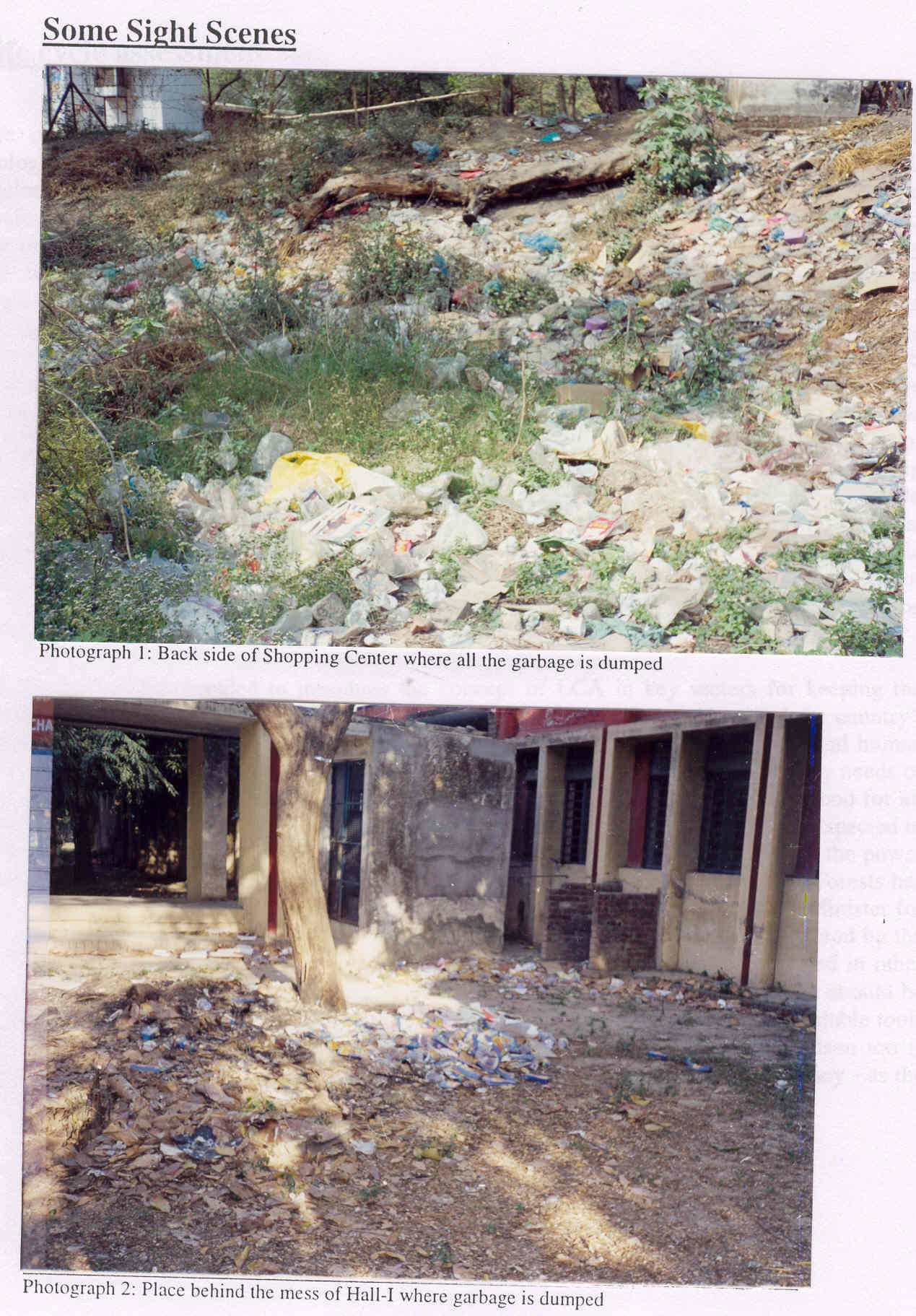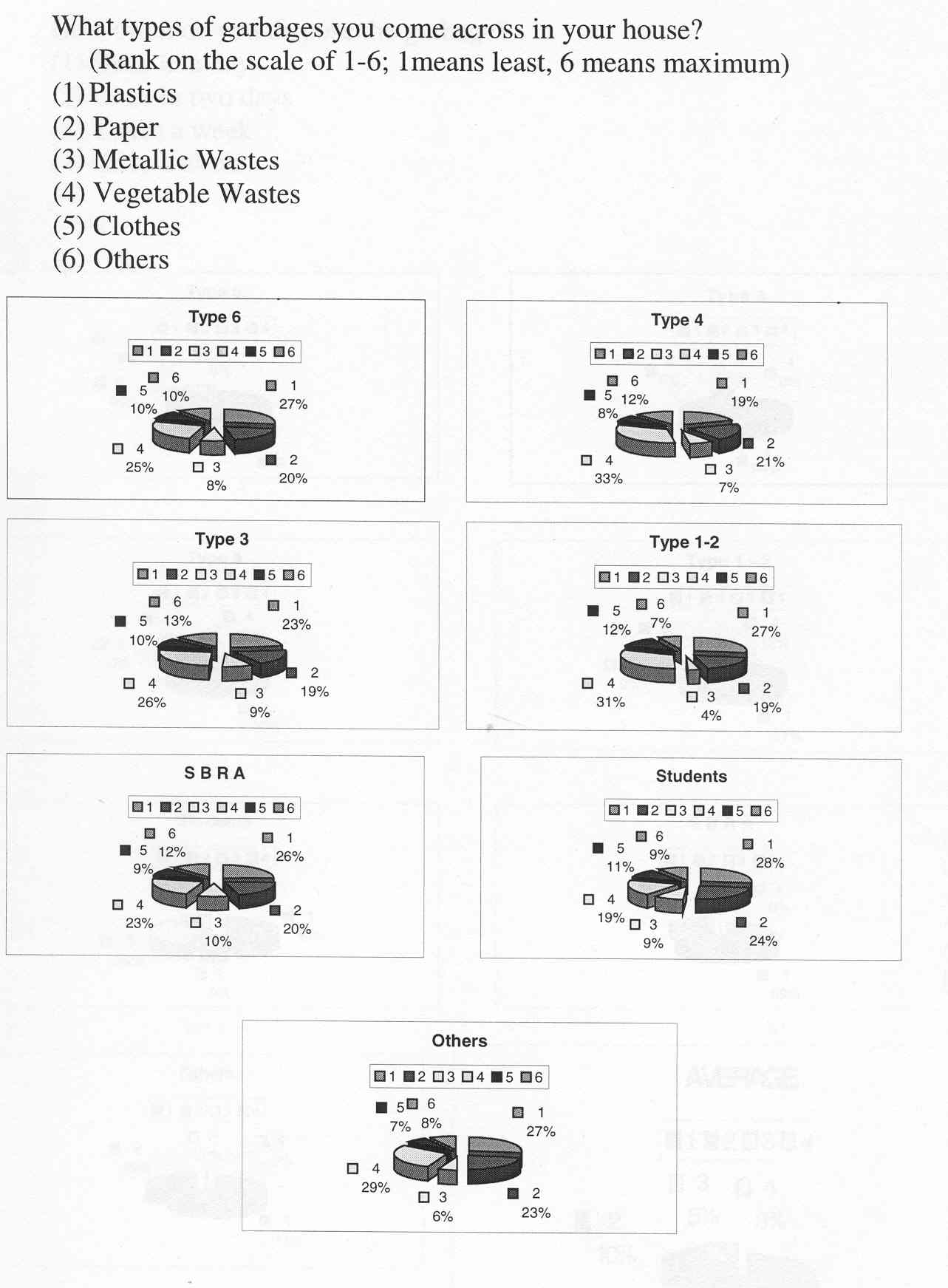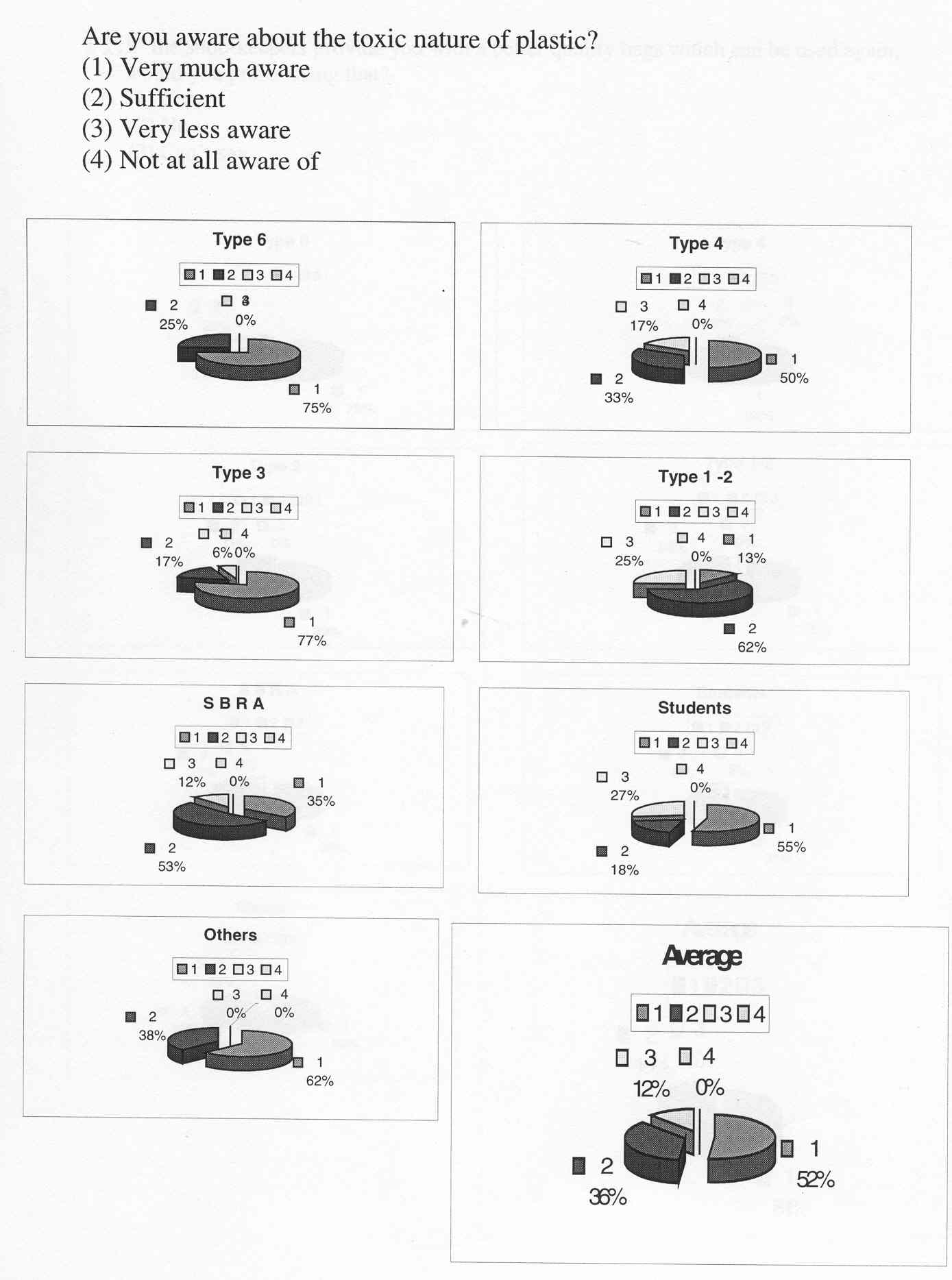Short Description Of Projects
ENVIRONMENTAL EFFECT ON USING PLASTIC BAGS
Submitted By:
Course Instructor: Dr. Amit Ray
Project Guide: Dr. S. Guha
Introduction:
In our era of ecological and environmental awakening, the question of paper or plastic bags should be taken, and considered seriously. Everyone uses bags. Everybody has this choice. Why do ~ have a choice? It is a question of environmental impact, and it should be the responsibility of us a to make the most ecologically aware, and sound decision.
The present survey is an exploration of, and an attempt to minimize the plastic garbage product from IIT Kanpur campus. We took door-to-door survey from every section of resident in campl viz. professors, employees, students and shopkeepers. We took around 125 samples randomly.
Where Plastic comes from?
Plastic comes from oil, and the oil industry is no small operation. In many places around the world and in the U.S., sites exist where the geologic conditions are such that a gas and oil concentration has been trapped. Upon location of these traps, a hole is drilled and a pipe rammed into the deposit. The oil is pushed to the surface due to pressure in its chamber, and also from the weight earth above. The oil drilling operation, itself, ,has become a rather small and sterile undertaking.
At the drilling site, a storage drum is filled, and, when full, the content oil is loaded into trucks, sometimes piped, to a refining facility. This is where plastic is made. Plastic comes as a by-product of oil refining, and uses only 4% of the total worlds oil production. It is a biogeochemic manipulation of certain properties of oil, into polymers, that behave 'plastically.' Plastic polymer are manufactured into 5 main types, of which, plastic bags are made of the type known Polyethylene. Raw Polyethylene comes from oil refineries as resin pellets, usually 3-5 m diameter, by 2-3 mm tall. The raw material, as it is called, since it is plastic, can be manipulate into any shape, form, size, or color. It is water tight, and can be made UV resistant. Anything c; be printed on it, and it can be reused.



CONCLUSION
![]() Results show that most of
the people are conscious about environment.
Results show that most of
the people are conscious about environment.
![]() The percentage of plastics
in garbage is found to be maximum so its really a matter of concern
The percentage of plastics
in garbage is found to be maximum so its really a matter of concern
![]() Residents of type 6 and 4
are already enjoying door-to-door collection of garbage but they are not
satisfied with the design of garbage bins.
Residents of type 6 and 4
are already enjoying door-to-door collection of garbage but they are not
satisfied with the design of garbage bins.
![]() Other residents favored
door-to-door collection of garbage and they are ready to pay for this service.
Other residents favored
door-to-door collection of garbage and they are ready to pay for this service.
![]() Results shows that most of
the people, when they are on the move in the campus, first of all search for the
dust bin to throw some garbage but since they could not any bin they throw the
garbage anywhere; although some of them brings the same to his/her house. This
statistics clearly indicates the need for garbage bins across the campus.
Results shows that most of
the people, when they are on the move in the campus, first of all search for the
dust bin to throw some garbage but since they could not any bin they throw the
garbage anywhere; although some of them brings the same to his/her house. This
statistics clearly indicates the need for garbage bins across the campus.
![]() If municipality provides
different dustbins for different kind of garbage then most of the people (around
80%) will care to separate the garbage most of the time. It's a good indication,
we think institute authorities can implement this idea. The bio-degradable
portion can be directly used for the production of manure and non bio-degradable
can be sent for land filling/recycling.
If municipality provides
different dustbins for different kind of garbage then most of the people (around
80%) will care to separate the garbage most of the time. It's a good indication,
we think institute authorities can implement this idea. The bio-degradable
portion can be directly used for the production of manure and non bio-degradable
can be sent for land filling/recycling.
![]() If the shopkeepers could
provide paper bag then people will prefer it.
If the shopkeepers could
provide paper bag then people will prefer it.
![]() About the view of using
plastic bags, we found interesting result: almost half of people whom we have
surveyed strongly condemned its use whereas almost half of the people said that
they don't mind using it (sine they don't have other option!).
About the view of using
plastic bags, we found interesting result: almost half of people whom we have
surveyed strongly condemned its use whereas almost half of the people said that
they don't mind using it (sine they don't have other option!).
![]() Most of the people are
aware of the toxic nature of plastics.
Most of the people are
aware of the toxic nature of plastics.
![]() If the shop-keepers
provide people with a better quality bag that can be used again then around 84%
people favored this idea. The idea behind this suggestion is to minimize the
plastic garbage produce from the campus.
If the shop-keepers
provide people with a better quality bag that can be used again then around 84%
people favored this idea. The idea behind this suggestion is to minimize the
plastic garbage produce from the campus.
![]() Most of the consumers are
ready to pay (in the range Rs. 1/- to Rs. 5/-) for the better quality bag. These
bags can be of paper, jute, cloth or even plastic! The idea behind this
suggestion is to bring some change in habit in people. We strongly believe that
one will not pay for the bag every time, he will purchase the bag for
twice-thrice then there will be some self motivation to keep his/her own bag
while going for purchasing.
Most of the consumers are
ready to pay (in the range Rs. 1/- to Rs. 5/-) for the better quality bag. These
bags can be of paper, jute, cloth or even plastic! The idea behind this
suggestion is to bring some change in habit in people. We strongly believe that
one will not pay for the bag every time, he will purchase the bag for
twice-thrice then there will be some self motivation to keep his/her own bag
while going for purchasing.